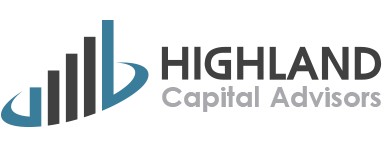
Participant-Directed Services
Policy & Governance Support
Through a number of tool and capabilities, we look to help you avoid any conflict of interest, ID who is a fiduciary and who is not and adopt prudent policies and processes.
This starts with your Committee Charter and Investment Policy Statement, which are the “blueprints for how your investment program is expected to operate now and into the future. These policies, along with these other tools and capabilities, include ensure proper governance:
- Committee Charter – to ensure committee roles are understood and decision-making authority is followed;
- Investment Policy Statement – to document the substantive and procedural prudence that is embodied in our quarterly performance reporting process;
- 408(b)2 Disclosure Reviews – to ensure service provider arrangement does not constitute and prohibited transaction;
- 404(a)5 Disclosure Reviews- to provide service provider arrangement do not constitute and prohibited transaction;
- 404(c) Disclosure Reviews – to mitigate fiduciary liability resulting from a participant exercising control over their own investments;
- QDIA Designation – to reduce fiduciary responsibility resulting from a participant being deemed to have exercised control over their own investments;
- Mapping Safe Harbors – to mitigate fiduciary liability arising from a participant being considered to have exercised control over their own investments; and
- Safe-Harbor and Other Participant Notice Reviews – to ensure the qualified status of the Plan and to ensure compliance with fiduciary safe-harbors.
At your preference, Highland will act as an ERISA 3(21) or 3(38) fiduciary.
Fund Search & Selection
Highland’s research process, resources, and capabilities are derived through close coordination among our Senior Consultants.
Unlike some firms, Highland’s research function is not a centralized, home-office investment “product” for mass distribution (i.e., an approved funds list), but a professional service customized for each client (i.e., open universe screening).
Highland’s proprietary fund screening and selection process is not influenced in any way by alliances, affiliations, brands or selling agreements. We seek to find the best funds that statistically demonstrate persistent value across a variety of quantitative and qualitative metrics.
Our screening and selection process produces specific recommendations for each mandate.
Menu Design & Allocation
Menu design has a powerful effect on behaviors & outcomes. Highland adheres to well researched best practices. We don’t merely look to fill style boxes; we choose funds that work in harmony to give participants a streamlined menu that is easier for them to navigate while still giving them broad exposure to the markets.
Highland believes that thoughtful coordination of asset allocation and time horizon is still the preferred approach to managing investment risks in most situations. Other methods (market timing, Insurance products with guarantees, and alternative investments, etc.) can have strong emotional appeal, but we find that the “no free lunch” adage almost always holds true.
Performance Monitoring
Fund manager performance is reviewed and assessed through a context of value-added. Given that all major asset classes can be accessed through a low-cost index alternative, any fee premium for active management should produce value in excess of the raw or risk-adjusted returns of the benchmark net of fees. Similarly, a low-cost index fund should closely track its underlying benchmark gross of fees.
Sound monitoring begins with thoughtful benchmark selection. Highland’s over-arching philosophy is to assign a benchmark that reconciles the portfolio mandate and the Manager’s stated objectives. As a result, Highland does not blindly rely on the primary or secondary benchmarks designated in a fund’s prospectus. Instead, we consider how well these objectives harmonize with the client’s specific mandate as defined in the Investment Policy Statement, Performance Report or other material. We then present to the client our recommended benchmarks, including our justification for their selection.
Fee Evaluations
As fiduciary to the Plan, we not only help monitor the investments, but we can also track the service providers concerning their service, capabilities, and fee competitiveness. Our experience working with a variety of record-keepers, third-party administrators, custodians/trading platforms, actuaries, pension plan administrators, etc. provide valuable perspective on what is commonly available and what to expect. Our vendor search experience adds to this perspective.
Plan Design
The retirement plan design, reflects the philosophy of the plan sponsor and design objectives have changed dramatically over the last 20 years. While some plan sponsors continue to focus on income replacement objectives for lifelong careers (i.e., 30 years or more), many are focusing on providing retirement savings subsidies during shorter career “segments”. Under either approach, we have the expertise to conduct a variety of income-replacement studies to inform design alternatives and/or employee engagement campaigns.
Merger and Acquisition Support
We are involved with evaluating the plan merger impact and how the respective designs needed to be harmonized in a uniform go-forward strategy. We help to identify the provisions that are protected benefits and must be maintained and evaluate which of the requirements that are not protected should move forward.
Vendor Search
We are involved with evaluating the plan merger impact and how the respective designs needed to be harmonized in a uniform go-forward strategy. We help to identify the provisions that are protected benefits and must be maintained and evaluate which of the requirements that are not protected should move forward.
Vendor Search
As fiduciary to the Plan, we not only help monitor the investments, but we also monitor the providers concerning their services, capabilities, and fee competitiveness. Our experience working with a large variety of record-keepers, third-party administrators, custodians/trading platforms, actuaries, pension plan administrators, etc. provide valuable perspective on what is commonly available and what to expect. Our vendor search experience adds to this perspective.
When benchmarking service providers to find the right fit for a plan sponsor, we go beyond just the fees to understand the value of the services being provided. We consider fees relative to desired outcomes, plan design, and features and participant outcomes while considering whether your fees are reasonable.
Fiduciary Education
We find that the most meaningful education is delivered on a real-time basis through the regular committee meeting process. Every topic of discussion or decision typically provides an opportunity to expand the knowledge and understanding of our clients and their fiduciary responsibility. We put context and relevance behind every recommendation we make.
At your preferences, we can also take a very traditional, linear approach that reviews the underlying legal framework in some detail through a dedicated fiduciary training session. However, this approach can be overwhelming for larger Committees with rotating membership.
On initiation, we would institute a Committee Charter to help defined the roles and responsibility for committee along with confirmation of the IPS, both of which will be reviewed on an annual basis with the committee members.
Participant Services
Thoughtful coordination is the key to a participant servicing strategy that is comprehensive, effective, and cost-efficient. Our mission is to make excellent participant outcomes easy to achieve through two priorities; save sufficiently and get (stay) rationally invested.
Adaptable Coordination
We believe effective employee communications is a team sport with critical roles played by the advisor, the record-keeper, legal counsel, and your staff. Operationally, employee communications are primarily fulfilled by the advisor and record-keeper, and optimally managing the division of responsibilities between these parties is central to an effective communications strategy. We want to help you and your participants become expert consumers of the financial services available to you.
Maximizing Benefits
Since Highland can work with any vendor the client prefers, we have developed an open architecture approach to supporting employees that is scalable and flexible. In some cases, we fully leverage your vendor’s capabilities and provide only Committee level guidance and advocacy. In other cases, we take over the primary communications role and offer a wide array of support services, including:
- Plan Highlights
- Fund Fact Sheets
- Model Portfolio “Age-based” Road Maps
- Model Portfolio Fact Sheets
- Ad-hoc Custom Notices and Memos
- Toll-free telephone support
- In-person and on-line one-on-one consultations
- In-person and on-line Group Meetings
- Savings vehicle evaluations (i.e., Pre-tax vs. Roth vs. Thrift vs. Taxable, etc.)
Goals and Strategy
Each year we would use participant data usually provided by the record-keeper to help identify areas of the desired improvement, whether it is participation rates, maximizing match contributions, investment diversification, or increasing the percentage of participants who have beneficiaries on file. We would document the starting point, the goal, and then discuss several different strategies on how to obtain the goals. The strategy could utilize targeted communications, special group education topics, or simplified processes to encourage specific actions (i.e., easy enroll or easy deferral increase cards).
One on One with Participants
We can meet with your participants one-on-one to discuss goals, objectives, savings rates, and investment strategies.
We believe it is essential to “meet employees where they are at,” and it’s healthy for all staff to understand what that means. We think it makes us better at what we do than the typical “ivory tower” approach used by others where the more senior advisors don’t participate in direct participant engagement.


